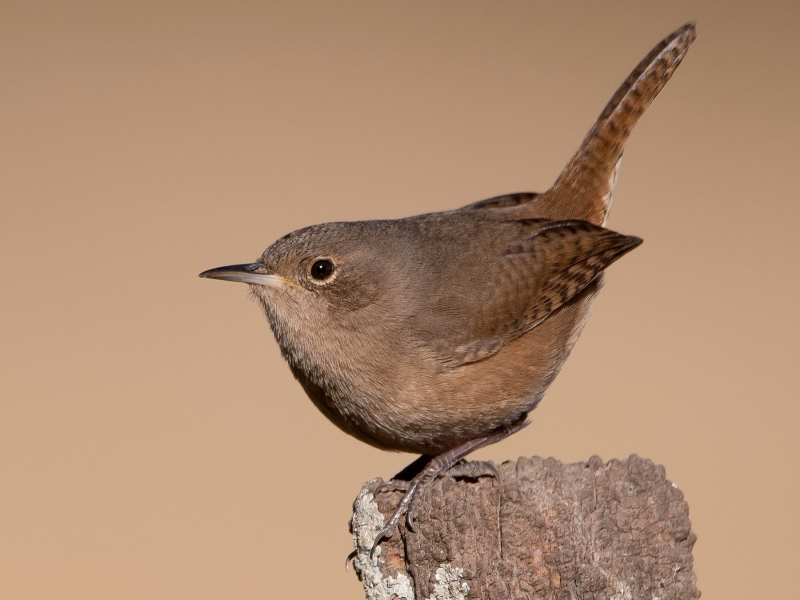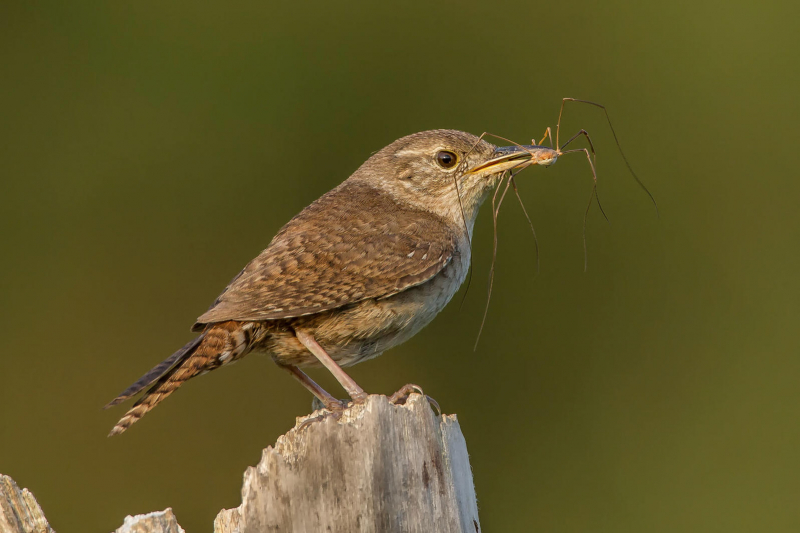House Wren
The House Wren (Troglodytes aedon) is a very small songbird of the wren family, Troglodytidae. The most widely distributed native bird in the Americas, it can be found from Canada to the southernmost tip of South America. It is the most prevalent wren and may be found in most residential areas within its range. Due to its extremely complicated taxonomy, certain subspecies groups are frequently regarded as different species. The word troglodytes, which refers to a bird that hides in cracks to hunt for insects or find refuge, is from the Greek and means "hole dweller".
Adults are 10 to 12 g in weight, 11 to 13 cm long, and have a 15 cm wingspan. The wing chord ranges from 4.7 to 5.3 cm, the tail from 3.9 to 4.4 cm, the culmen from 1.1 to 1.3 cm, and the tarsus from 1.6 to 1.8 cm, according to conventional measurements. The underparts of the subspecies range from brown, over buff, and pale grey, to pure white, while the upperparts range from drab greyish-brown to rich rufescent-brown. All of the subspecies have blackish bars on their wings, tails, and in some cases, their flanks as well. All subspecies have a slight eye ring and eyebrow, a long, thin bill, an upper jaw that is blackish, and a lower mandible that is yellowish or light grey with a black tip.












